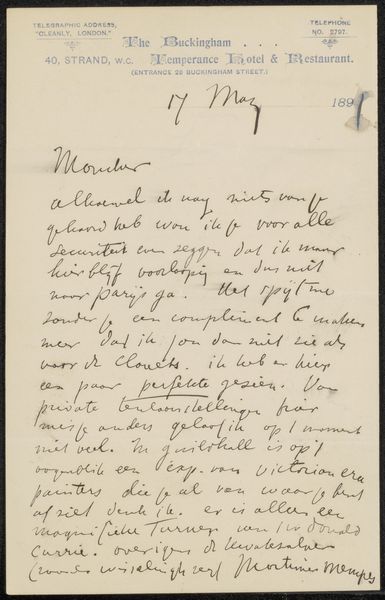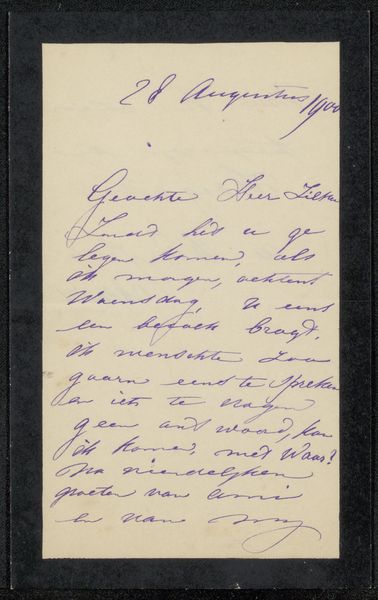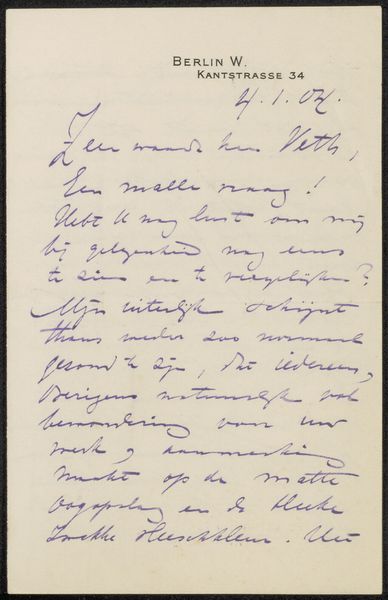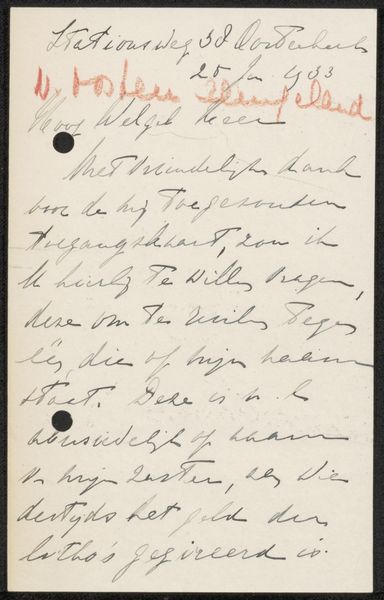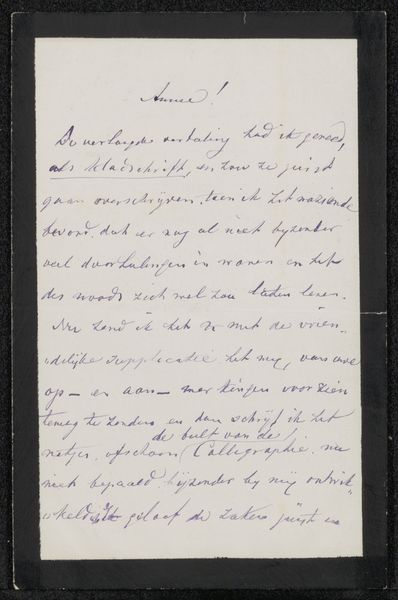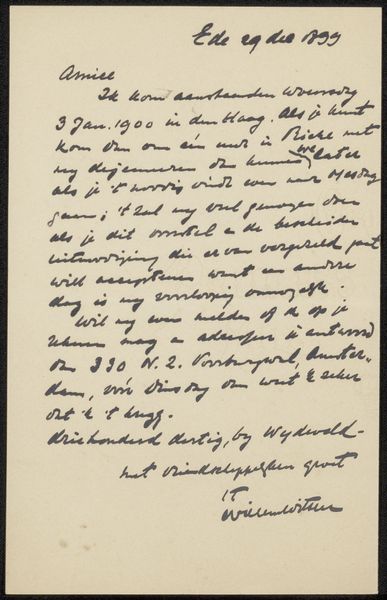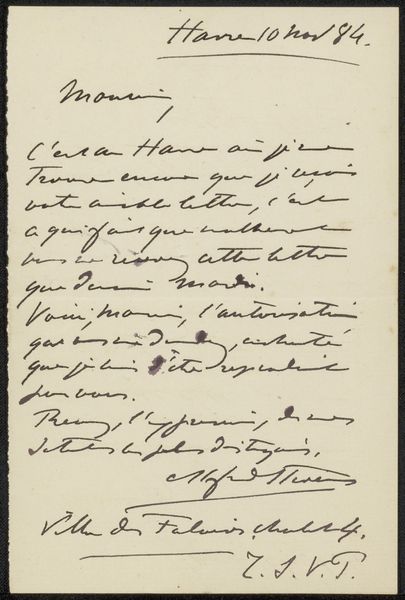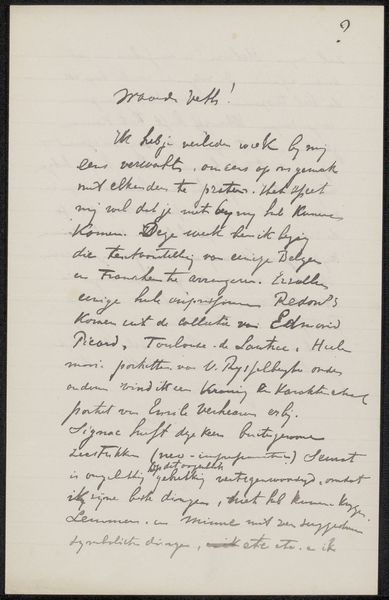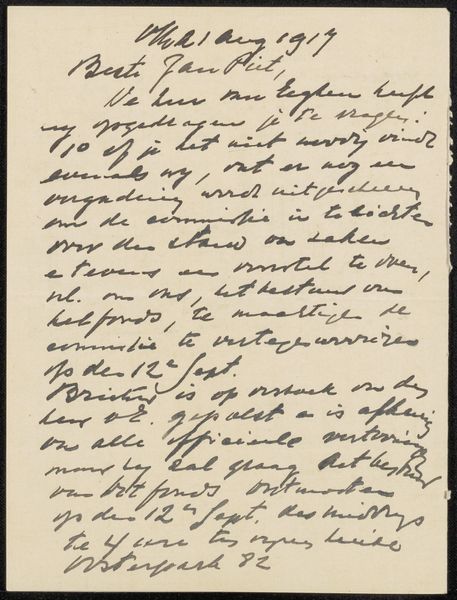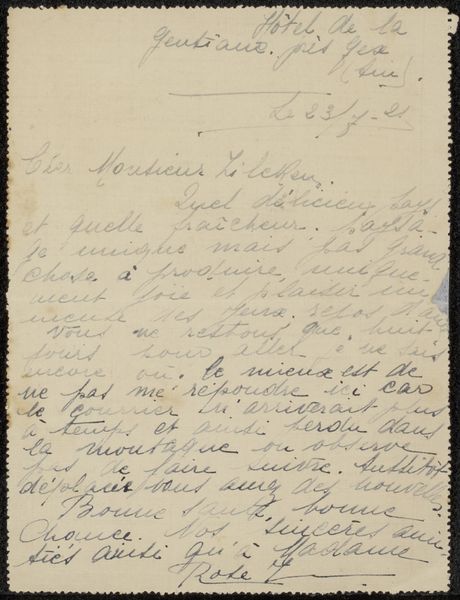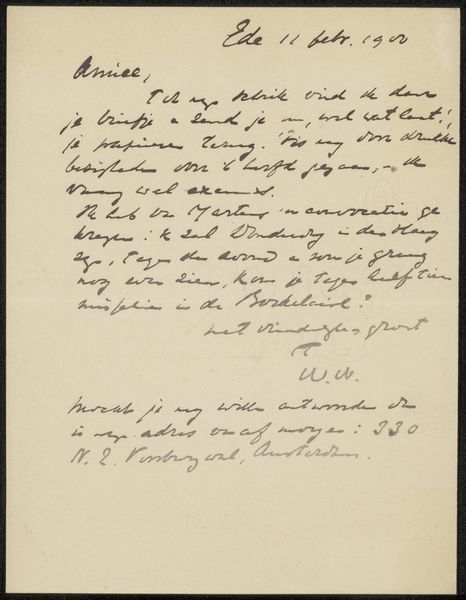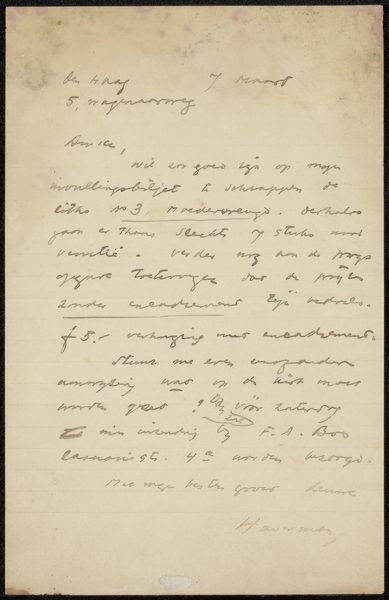
drawing, paper, ink
#
drawing
#
paper
#
ink
Copyright: Rijks Museum: Open Domain
Curator: Editor: Okay, we're looking at "Brief aan Philip Zilcken" by Maria Biermé, created before 1913. It appears to be ink on paper, a handwritten letter. I’m struck by its intimacy – the handwriting makes it feel so personal. What do you see in it? Curator: Beyond the immediate visual, I consider the materiality of this piece as fundamental to its meaning. The ink, the paper – these were produced and circulated within specific social and economic systems. This letter isn't just a personal message, but an artifact embedded in the networks of production and consumption of its time. Editor: That’s interesting, I hadn’t considered that. So, the cost of paper and ink, the act of writing itself... how does that change how we perceive it? Curator: Precisely. Before mass-produced communication, the act of handwriting and sending a letter had a very different weight. Think about the labor involved, the accessibility of these materials, and who had the leisure time and education to create such a piece. Doesn’t that influence how we value this communication? Editor: Definitely. It becomes less about just the content of the letter and more about the material circumstances surrounding its creation and delivery. Almost like a social document. Curator: Exactly! It invites us to explore the social conditions of artistic creation and how materials and the labor invested become part of the artwork’s meaning. Is it art or craft? Does the function matter, or the emotional labor contained within the physical document itself? Editor: That’s given me a lot to think about. I’m walking away seeing this piece less as just a letter and more as a cultural object shaped by its time. Curator: Indeed. Thinking materially reveals the layered history embedded within even seemingly simple works like this letter.
Comments
No comments
Be the first to comment and join the conversation on the ultimate creative platform.
